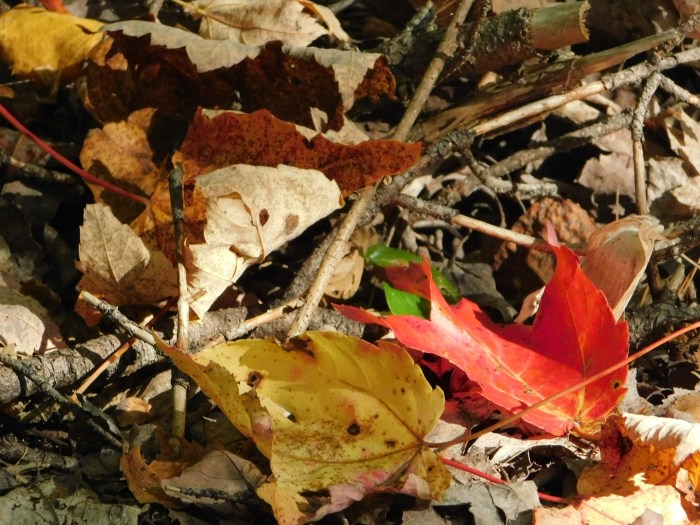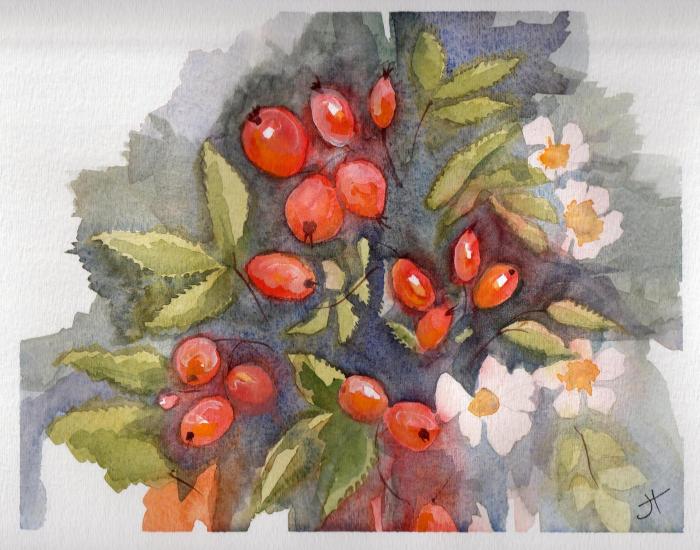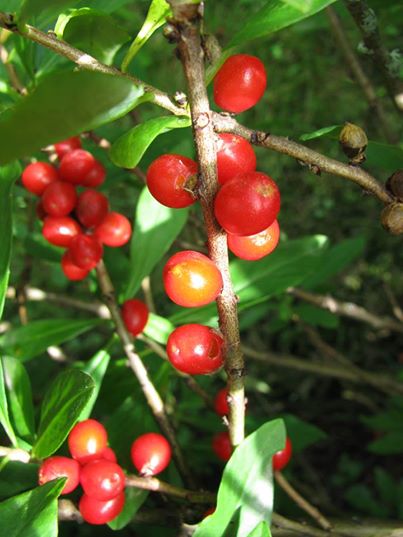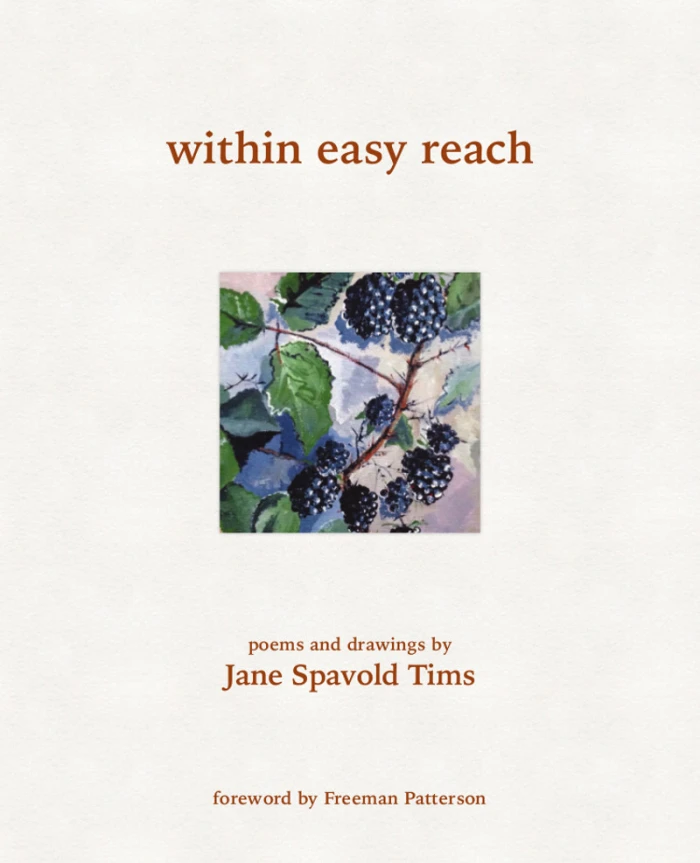Posts Tagged ‘brown’
colour: solemn, sombre
October in New Brunswick is an explosion of colour. However, as the red and orange leaves fall, browns and yellows begin to dominate the landscape.
~

View of Nerepis marsh looking south. The ferry is crossing the river, barely visible in the mist.
~

Colour variety in the marsh grasses.
~

Hay-scented fern adds yellows and browns to the ditches.
~
solemn, sombre
~
walked out to see you
once again as you
lay dying, somber
the soft light, marsh grass
leaning in the rain
autumn colour fades
tones solemn, ochre
of poplar and birch,
straw-pale, hay-scented
fern, Solidago
and tansy, shadows
in the ditch, the heads
of Typha
burst to seed
~

~
Copyright Jane Tims 2019
~
Best wishes everyone!
Jane
harvesting colour – rose hips
All summer, I watched the rose hips ‘developing’ on our bush and wondered if they would provide colour to my dye pot. The roses are pink in late spring and produce elliptical rose hips, bright orange.
~
~
Last week, I finally harvested the rose berries. I used scissors to avoid the springiness of the bush and the danger of getting smacked with those thorny branches.
~
~
The hips, boiled in water for a couple of hours, created a cloudy orange dye. And the alum-treated wool? A pale pinkish-brown.
~

in background, alum-treated wool dyed with rose hips; in the foreground, spun wool dyed with lichen, beet leaves and alder bark
~
I have so many shades of brown wool after all my dyeing adventures, this brings into question the idea of ‘best use’ – rose hips are valuable as a source of Vitamin C, can be used in jams, teas and other beverages, and have a potential use in reducing the pain of arthritis. And I apologize to the Chickadees who were so obviously upset as I picked the bright red berries.
~
Copyright 2014 Jane Tims
harvesting colour – berries of Daphne
With the help of a friend, I have been able to add Daphne berries to my growing list of plant dye experiments. She invited me to harvest some of the berries from her Daphne bushes, before the birds ate them all. We spent an hour picking berries and catching up with one another. I went home with enough berries for my dye pot and some of her excellent photos of the Daphne berries.
~
~
~
Daphne’s beautiful crimson berries are poisonous, although the birds love to eat them. I was anxious to see what colour they would bring to my growing collection of home-dyed wool. I know from reading that the leaves and twigs of Daphne produce a yellow dye.
~
In the dye-vat, the berries quickly lost their colour to the boiling water, making a pale rose-coloured dye.
~
~
And the colour of the wool roving after an hour’s simmer in the pot? A lovely yellowish brown …
~
~
~
pretty side of poison
~
exotic, elliptic
berries among laurel
leaves droop vermillion
toxic pills, birds immune
~
spirit of bubbling wells
and water-springs, Daphne
drupes in rainwater seethe
and berries leach rosy
~
waters blush at this strange
use of poison, tint the
roving, wool lifts yellow
brown dye from the kettle
~
~
~
Copyright 2014 Jane Tims
harvesting colour – the vegetable stand
Gardens are bursting with fresh produce and we have gone to the farmer’s vegetable stand every couple of days to get our fill of locally grown food. We usually look for new potatoes, yellow wax beans, beets, carrots, green onions and zucchini.
~
~
This year, as a result of my ‘harvesting colour’ project, I am more anxious than ever to collect those carrot tops and the abundant leaves of beet and radish. Cooking these leaves in my dyeing ‘cauldron’ fills the air with the savory smell of vegetable soup, and makes me wonder what colour will emerge from the dye pot.
~
~
Orange carrots, red beets and scarlet radishes … I am sad to say my expectations were low. I was certain every batch of leaves would yield yet another shade of brown. For radishes and beets, I was correct. Beautiful browns.
~

my hand-spun balls of wool from radish and beet leaves … the pink is from my earlier tests with pickled beets
~
Imagine my delight when the carrot leaves yielded a bright celery green!
~
~
I tried to repeat the colour on a second length of wool roving, but the second simmering gave me a gold shade of brown. The dyestuff had offered up all its green colour in the first boil!
~
~
vegetable bin
~
most look for
vitamins and
anti-oxidants
seek the colourful plate
look at the farmer’s display and see
carrot orange
radish red
spinach green
~
a dyer looks
for juicy leaves
and the possibility of yet
another shade
of brown
~
~
Copyright 2014 Jane Tims
comforting Comfrey brown
As I try using various plants as a source of dye, I am realising how many shades of brown there are !!!
~
Over the weekend, I did a dye vat of Comfrey. Comfrey (Symphytum officinale) is a flowering plant often found in older gardens. It is a useful plant for gardeners … as a fertilizer, it contributes impressive amounts of nitrogen and potassium. As a compost component, it adds heat and moisture, and helps to speed up the composting process. In the past, Comfrey was recommended as a tea and a medicinal. However, the plant contains alkaloids. Taken internally, these can cause severe damage to the liver and, in Canada, the sale of products containing Comfrey is prohibited.
~
Comfrey grows in large clumps of linear leaves, up to a meter tall. Its stately foliage provides a great backdrop for smaller plants. Later in the season, it will produce curved clusters of bluish-purple flowers.
~
~
The underside of each Comfrey leaf is a maze of raised veins …
~
~
To make the dye, I added the leaves, coarsely chopped, to 6 liters of water. I couldn’t resist throwing in my rusty square nail, to add a touch of iron to the mix …
~
~
After boiling for an hour, I had a pale apricot-coloured liquid …
~
~
I strained and discarded the leaves (in my compost of course) and allowed the liquid to cool. Then I added some of my wool roving, pre-treated with alum, and simmered the wool for about an hour.
~
The result was yet another shade of brown, so similar, yet so different from the browns I obtained from Alder, Old Man’s Beard lichen and Tansy …
~

various dyes on wool roving (left to right): Alder bark, Old Man’s Beard lichen, Comfrey, Tansy and a glimpse of Beet
~
The Comfrey brown is a brown of the forest, without the orange or yellow undertones of the other browns I have made. This is the brown of the wild rabbit I saw in our driveway last week. It is the buff brown of the heads of Pine Siskins visiting our bird feeders in winter. This brown reminds me of soft mitten wool and caterpillar cocoons. From Comfrey comes a very comforting brown.
~
Although I could use my wool roving ‘as is’ in my weaving, I have decided to spin the wool. First, of course, I have to learn to spin. A maple drop spindle should be waiting in my mailbox later in the week. So many projects … good thing the days are getting longer !!!
~
Copyright 2014 Jane Tims
harvesting colour – beautiful brown!
I will never see brown with the same eyes again!
~
Today I finished a batch of alum-treated raw wool and I was ready to try my first experiment with dyeing animal fibre. The alum, you will remember, is a mordant, added to the fibre to increase its colour-fast and light-fast qualities. In some cases, it also makes the colours brighter.
~
Remember my gathering of Old Man’s Beard lichen? (https://nichepoetryandprose.wordpress.com/2014/03/26/colour-on-the-snow/)
~

jar with Old Man’s Beard lichen, water and ammonia
~
The lichen has been ‘fermenting’ in ammonia about a week and developed a lovely brown colour with tones of orange, reminiscent of root beer.
~

a sample of the dye obtained from the Old Man’s Beard lichen
~
I sieved out the lichen and added the dye to my dye pot. I added a little vinegar to neutralize the alkalinity since basic solutions can harm the wool. I put about one once of the alum-treated wool into the dye pot and added water, to cover the wool. Then I increased the temperature very, very slowly since sudden changes in temperature can damage the texture and weaken the fibres. I left the dye pot on simmer for about an hour and then left it to cool slowly. Now the wool is drying on the line in my dining room.
~
The result may seem like an unimpressive brown, but to me it is the most wonderful brown in the world. Reminds me of the ice cream in a root beer float! My first effort at dyeing wool, and obtained from a lichen of the palest green. I feel a poem stirring!
~

to the right, my lichen-dyed wool, and to the left, my un-dyed alum-treated wool
~
Copyright 2014 Jane Tims




































